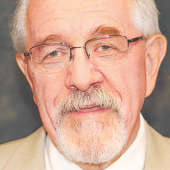- Christmas shopping is done, presents wrapped, strings attached? (12/14/16)
- Cecil is dead and human lives are threatened every day (8/12/15)
- As state flags go, Nebraska's ranks 50th (7/8/15)
- When everything looks like a nail (4/29/15)
- Who remembers to coal slurry pipeline debate? (3/11/15)
- More revelations in Department of Corrections mess (12/17/14)
- The Legislature becomes more Republican (11/19/14)
Opinion
Wildlife proposal costly, but worth it
Wednesday, April 3, 2013
Like many of his Sandhills neighbors, freshman State Senator Al Davis of Hyannis watched last summer as wildfires consumed acres of some of Nebraska's most scenic countryside, areas of rugged forested land which are home to once secluded cabins.
Likewise, similar fires consumed hundreds of thousands of acres from the Panhandle to Northeast Nebraska and a lot of places in between. Nebraska officials called 2012 the worst wild land fire year on record with nearly 500,000 acres burned, 65 structures lost and at least $12 million spent on fighting the fires (more than 390 fires recorded by mid-July 2012).
So what's another $1.75 million in anticipation of a problem which experts say will "occur far more frequently than in the past, spread and grow very rapidly immediately upon ignition, and burn over large areas for weeks. They are difficult to control and threaten lives, property, communities and infrastructures statewide," Davis told the Natural Resources Committee recently.
His bill (LB634) directs the Nebraska Forest Service, among other things, to contract with private aviation companies to place two single engine air tankers during the fire season at airports near Chadron and Valentine, the most heavily-forested and some of the most rugged areas of the state. Davis said the planes would provide rapid initial attack across a broad area of western Nebraska on both private and public lands, keeping fires small and less destructive. The Legislature's Fiscal Office estimates that would cost $750,000 a year, the largest chunk of the projected cost.
The bill also calls for the Nebraska Forest Service to thin forests to reduce fuel loads, substantially reducing wildfire risk, intensity, and rate of the spread, and reduce risks to residents, communities and emergency personnel. Expanded training programs for volunteer firefighters, private landowners, and communities in order to increase fire suppression effectiveness and safety would rack up another $150,000.
Development of a Nebraska-based incident management team that would serve as a comprehensive resource to augment and help manage large wildfire operations carries no additional cost. The committee offered an amendment to the proposal that would require the state Emergency Management Agency to develop the team as a resource for wildlife management. The committee also added the emergency clause to the proposal, which would mean that it would go into effect as soon as it is passed by the Legislature and signed by the governor.
The bill had 17 proponents, including Davis, at the public hearing and no opposition. Davis told the committee "we're going to have serious problems (with these fires) for years to come. We need this kind of support for our volunteer firefighters, our communities and our state."
Nebraska Forest Service Director Scott Josiah called the 2012 wildfires "a huge wake-up call. As these fires become bigger and more intense, we need better incident management."
Spending $1.75 million to prevent a $12 million loss makes sense. Let's hope that Davis' 48 colleagues and the governor agree.

